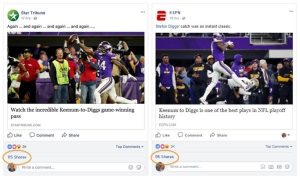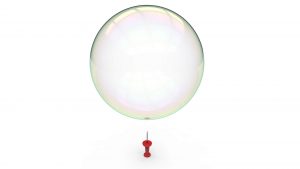— December 23, 2016
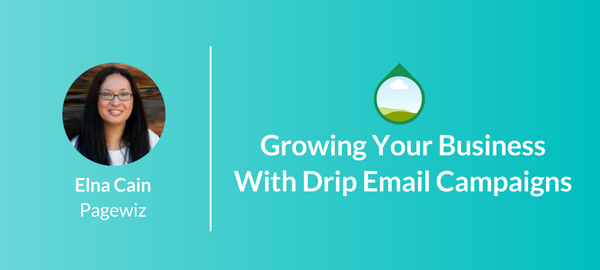
Email marketing is one of the cornerstones of digital marketing today. In a survey by Ascend2, 82% of companies were using email marketing in their businesses, and there is a good reason for this – it works!
MarketingSherpa found that 72% of people prefer to receive promotional material through email, compared to less than 20% through social media.
But with so many companies using email marketing, it’s getting harder and harder to get your voice heard. Subscribers have developed a distrust of automated emails trying to sell to them from the get-go.
Drip email campaigns are the perfect solution to this. They send targeted, personalized emails to subscribers at exactly the right moment. Research by Marketing Land found that personalized emails from drip email campaigns delivered 6 times the transaction rates.
What is Drip Email Marketing?
Drip email campaigns are automated sequences of emails that are delivered to your subscribers on a predetermined schedule. You can set specific delivery time frames for each stage of the chain, or you can tie them to a trigger. The trigger could be any number of things such as subscribing to your mailing list, signing up for a trial, visiting a certain page on your site, or even having a birthday.
Why Should I Use Drip Campaigns?
Lead Nurturing
“Whether you’re helping one segment of your audience get to know your business or prompting others to give you more business, it’s all about nurturing relationships at every touchpoint,” said Joe Cotellese of AWeber.
A study by MarketingSherpa found that marketing departments that used a lead nurturing campaign had a 45% higher return on investment. Also, The Annuitas Group found that nurtured leads provide a 47% higher order value than non-nurtured ones. Lead nurturing is the process of taking potential customers or “leads” and turning them into actual customers by building a relationship with them, listening to their needs and pain points, and helping them with any concerns or questions they have about your product.
Drip campaigns help with nurturing because they:
- Make it personal – You can segment your email list into different demographics and send targeted campaigns to each one. The more relevant the message is to the recipient, the more likely they are to open and engage with it.
- Build trust – Multiple engagements give subscribers a chance to get to know your company.
- Allow you to deliver information in bite-sized chunks – Daniel Louis of TruConversion recommends drip campaigns because you can take large pieces of information about your product that would normally scare off subscribers and spoon feed it in small, digestible pieces.
Save Time
Automated campaigns are exactly that – time savers. Once you’ve set up a campaign and usually tweaked it to the point you’re happy with the results, you can simply leave it running indefinitely.
Timing is everything
The timing of an email can mean the difference between a sale or not. For example, an email sent within the first 24 hours of shopping cart abandonment has almost a 50% chance of being opened – and more than one-third of these emails can often result in a purchase.
How to Run a Drip Campaign
Choose an Email Marketing Service Provider
Before you get started, you need to be using an email marketing service provider that supports email automation. If your current provider doesn’t have automation functionality – or if their automation is rudimentary or difficult to use – there are a whole host of different providers available, each with varying features and price tags. Here four popular choices:
MailChimp
MailChimp is one of the most popular email marketing service providers out there, and not just because of its cute monkey logo. It’s simple to use and offers ample analytics to run successful campaigns. MailChimp gives you the option to use ready-made campaign templates, or create them from scratch.

MailChimp’s “Growing Business” plan lets you send unlimited automated emails to up to 2,000 subscribers for $ 25 per month.
Infusionsoft
Infusionsoft is one of the most powerful providers available and offers a wide variety of marketing automation features, along with shopping cart and true CRM functionality. It offers a visual campaign builder that makes campaign management easy. In addition, you can organize landing pages, paper mailings and even voice messages alongside the digital aspect of your campaign for a full-scale marketing approach.
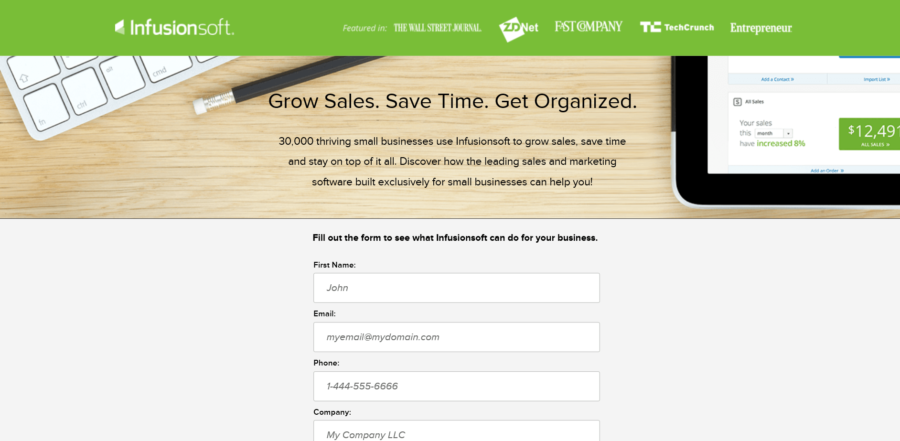
Infusionsoft is pricey, but you get a lot of functionality for your money. You’ll have to decide whether you will make use of the additional features, though. The cheapest plan available is $ 199 per month (with a hefty setup fee); for this, you can send 12,500 messages to 2,500 contacts.
ConvertKit
ConvertKit is a newer email service provider that mainly targets small businesses and bloggers. They make marketing automation simple to use and also get you started with a set of drip campaign draft emails with a proven schedule already laid out – along with multiple triggers and sample actions.
ConvertKit also integrates with a number of useful plugins like shopping cart provider, Shopify.
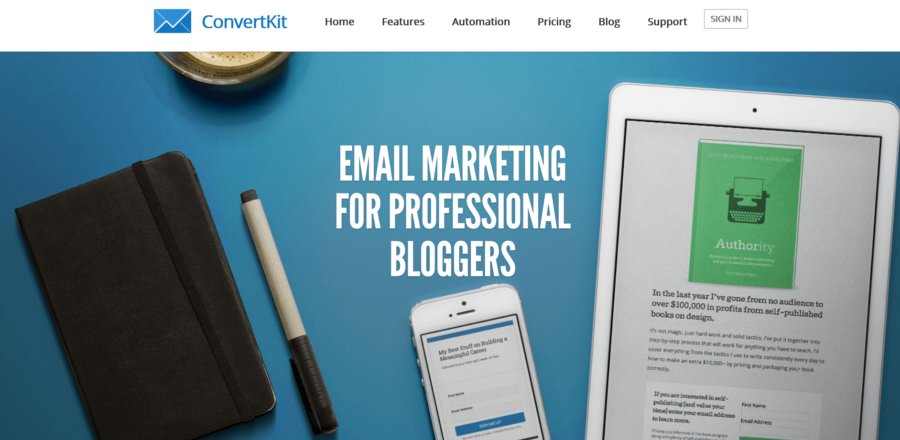
Starting at $ 29 per month, you can send unlimited emails to 1,000 subscribers.
AWeber
AWeber is one of the less-expensive email service providers on the market and has been in the game since 1998. In 2015, they rolled out their email automation tool known as “Campaigns”. The tool has an easy-to-use drag-and-drop editor that lets you create your campaign schedule. It’s not as powerful as some other providers’ out there, though, as it has only two trigger options to start a campaign:
- Subscribe – When a user is added to your list
- Tag – When a subscriber in your list is tagged
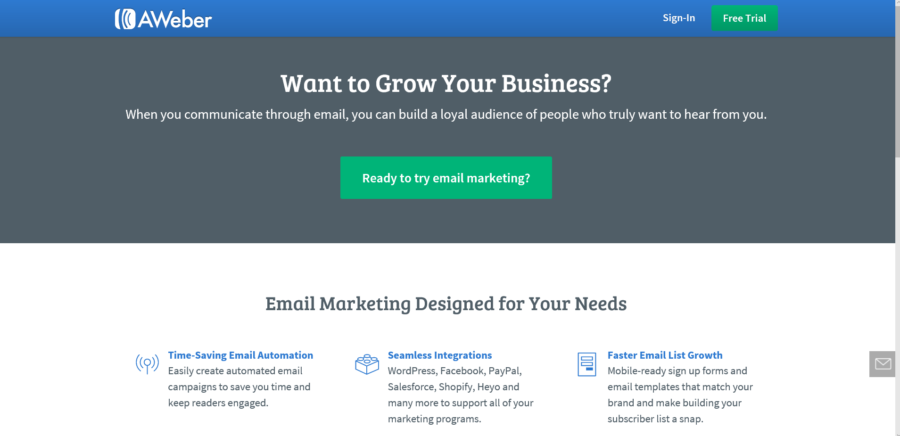
AWeber offers a free trial for 30 days. After this, the basic plan starts at $ 19 per month to send unlimited emails to 500 subscribers.
Determine Your Email Marketing Goals
What is the end goal of your campaign? It’s important to decide this at the start because it will dictate everything you do. Is it to beta test a new tool you’ve been developing – maybe at a discount? Or is it to get sign-ups for a free trial? Maybe it’s simply to sell more products?
TruConversion recommends using the S.M.A.R.T. formula when determining your objectives:
- Specific –The more specific you make your objective, the easier it will be to drill down to what you need to do, and how you are going to get there.
- Measurable – Making your goal measurable allows you to know exactly whether you’ve achieved it or not.
- Attainable – This makes sure you aren’t wasting your time chasing something that is not possible.
- Realistic – Is the objective you’ve set and the time frame chosen realistically achievable?
- Time frame – This keeps you accountable for achieving your goal and helps to motivate.
Choose your Triggers
Some of your campaigns may be set up to send emails out on a predetermined schedule, and some campaigns may rely on triggers. There are a number of options at your disposal when it comes to triggers. Let’s look at some examples:
Signing Up for a Free Trial
This is one of the most popular ways to start an automated campaign. A lot of successful online companies run free trials to hook people in, for example, NowTV:

This trigger can be a great way to increase sales by getting a subscriber into a targeted drip campaign with the sole focus of converting an interested subscriber into a customer.
Browse Specific Products
If you’ve ever shopped online or even just browsed around while you’re logged into a shopping site, you’ll likely have come across the following scenario. You check out the latest Game of Thrones season on Amazon and a few days later you receive an email suggesting another fantasy series you might like to check out.
Here’s an email that’s sent after browsing some romance novels on Amazon:
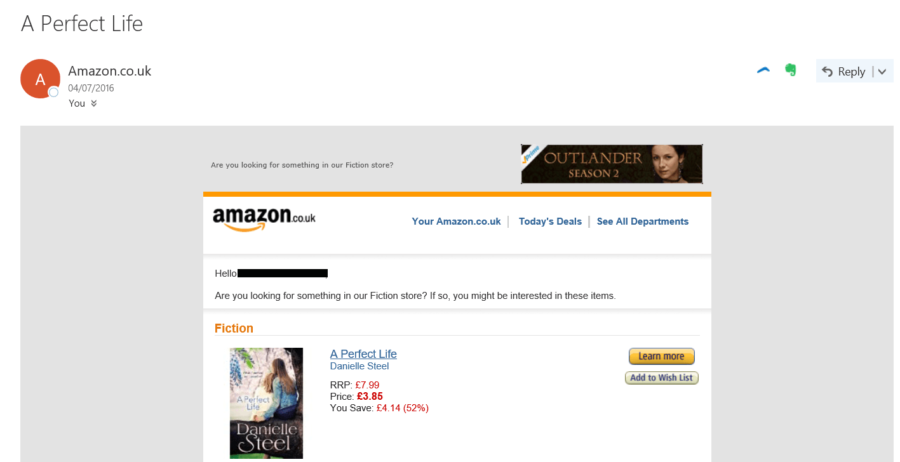
This trigger is great for upselling because you have very specific information about the visitor’s needs and tastes.
Specific Dates
A special occasion can be a great reason to connect, or reconnect, with subscribers. If you have access to a subscriber’s date of birth, you can send a Happy Birthday message, or you could send a message on the anniversary of the reader using your company for the first time, like Airbnb:
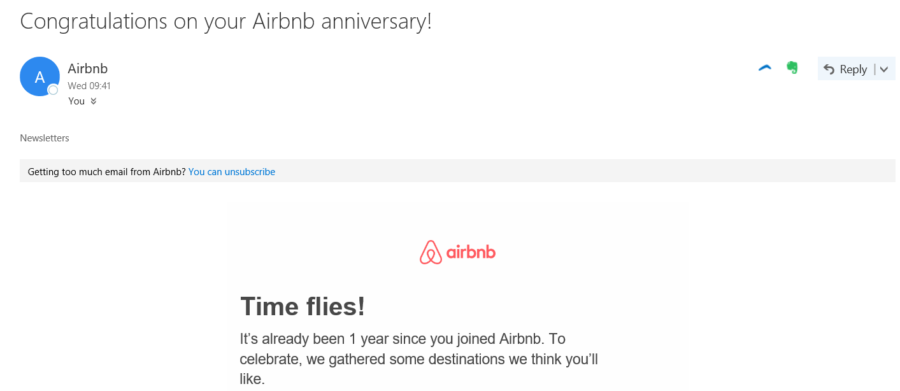
Shopping Cart Abandonment
The average rate of shopping cart abandonment, as calculated by Baymard Institute, is 68.63% – a pretty astonishing figure. Drip email campaigns offer a solution to this.
In a study by MarketingSherpa, 29% of abandoned carts were recaptured by one follow up email. Imagine what you could achieve with a drip campaign sequence!
Here’s an example of a follow-up email from Amazon:

Segmentation is Key
It’s extremely important to divide your mailing list into segments so that you can target specific groups of people with personalized emails.
Sendloop recommends dividing your list into segments such as:
- Geographic location – for targeting recipients in a certain area
- Purchase history – what subscribers buy and when
- Open history – some subscribers may be more likely to open emails than others, and they may be easier to sell to
- Browsing history – the pages of your site users visit the most can reveal a lot about what they are looking for
Most email marketing service providers such as MailChimp and ConvertKit have tools that allow easy segmentation.
Plan Your Campaign
Next, you need to formulate your actual campaign. Each mailing providers’ process will be slightly different, but most make it quick and easy to put together a campaign.
Think carefully about:
- How many emails you send – Too many emails can quickly reduce your subscriber list. Five seems like a popular number.
- When you send emails – Yesware analyzed over 500,000 sales emails and found the optimum time to send emails to get a reply is between 6am and 7am, and after 8pm.
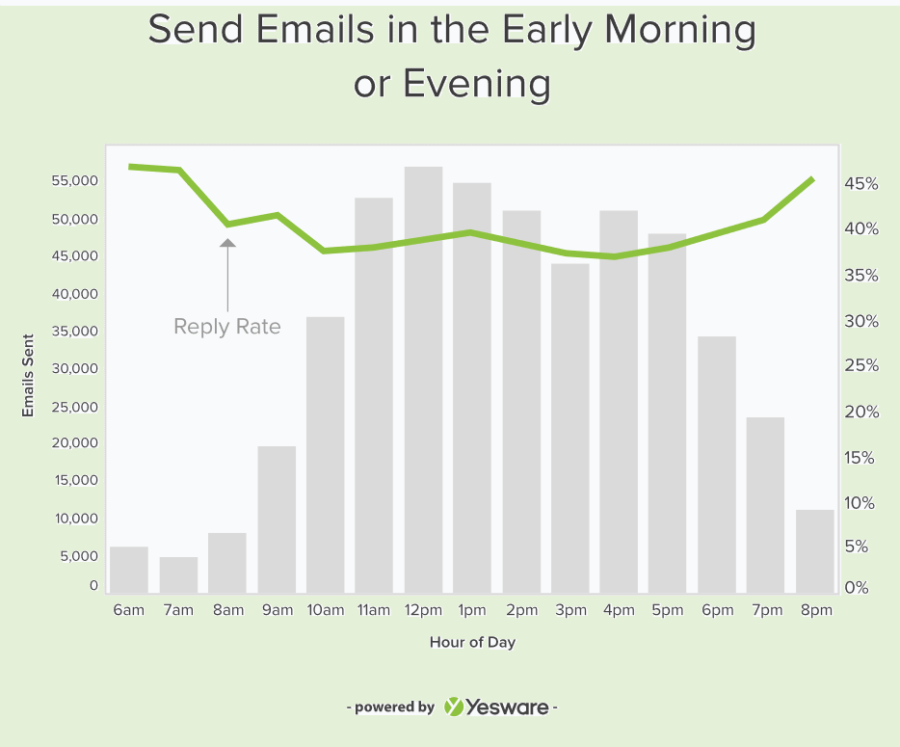
Interestingly, this corresponds with the time that the least amount of email is sent. Also, unlike social media marketing, there was little difference in the weekday reply rate, but a large one on the weekends:

- What you write in your email – Joe Stych, of Zapier, strongly advises checking that your messages match up with their triggers: “Nothing’s worse than getting an emailed coupon for something you bought last week, or an over-the-top sales pitch seconds after signing up on a site.”
Measure Your Results
To be successful with drip campaigns you must monitor the results and adjust accordingly. A two-pronged approach is best.
First, utilize the analytics your mailing provider provides. This will allow you to see important statistics about your campaign on an email level such as:
- Open rate
- Click-through rate
- Comparison of statistics to previous campaigns you’ve run and the average for the industry you operate in
- Demographics of readers
Secondly, you need to look at the effect of the campaign on a website level. Use Google Analytics or other analytics tools to look at statistics such as:
- Bounce rate (how long people spend on your site before leaving)
- Visitor count
- Returning visitor count
So, for example, if your goal is to improve sales of a new product with a discount voucher, you’ll want to monitor how many people open your campaign emails, how long people spend on your product page, and how many sales you make.
The average cold email open rate is around 23% and Yesware recommends looking at the following points if you are seeing less than this:
- What time are the emails being sent?
- What words are you using in the subject line?
Additionally, most quality email marketing service providers will also provide tools to A/B test each email so you can adjust the subject line and content accordingly.
Pagewiz and Drip Emails
When you’re sending out targeted emails, the majority of them will have a call to action link. Now if you’re sending visitors directly to a product page, or a shopping cart page, then you probably already have those set up on your site. But, what if you’re using the pre-sale or soft sell approach, and need something a little more convincing than a plain text email permits?
Wrapping It Up
Drip email campaigns are definitely the future of email marketing. With more and more companies utilizing email marketing, you need to stay ahead of the game. With the right provider, campaigns are easy to set up, and the advantages of running targeted drip campaigns have already been proven. In a study by Lenskold Group, 63% of companies that used email automation were outgrowing their competitors. How does that sound?
Next week, we’ll have a conversation about Buffer’s drip email campaigns, analyzing their success.
Over to you – if you’re not already using drip email campaigns in your business, what’s holding you back? And if you are, how have they worked to improve your overall conversions?
Digital & Social Articles on Business 2 Community
(141)
Report Post
